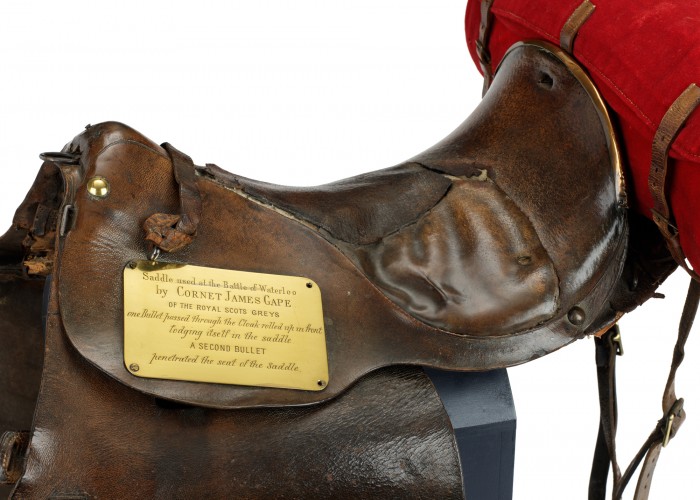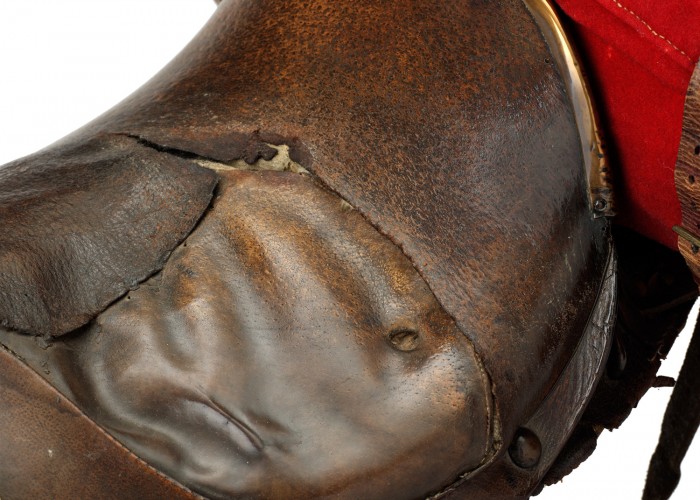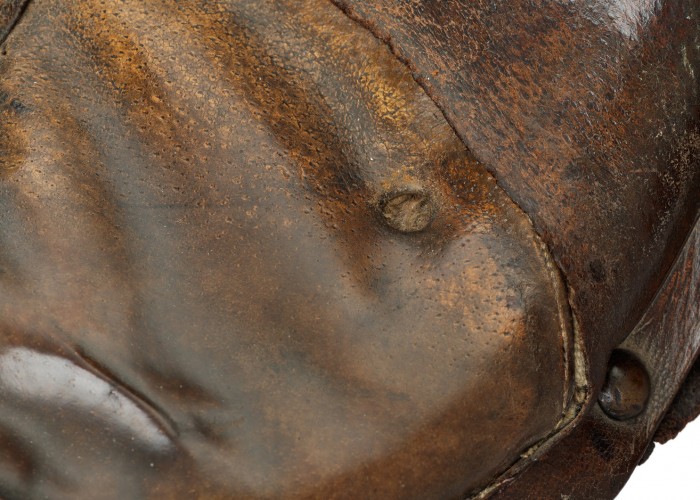Saddle Pierced by Bullet-Holes

 Saddle holed by bullets at Waterloo. Copyright Royal Scots Dragoon Guards Museum.
Saddle holed by bullets at Waterloo. Copyright Royal Scots Dragoon Guards Museum.
 Saddle holed by bullets at Waterloo. Copyright Royal Scots Dragoon Guards Museum.
Saddle holed by bullets at Waterloo. Copyright Royal Scots Dragoon Guards Museum.
 Saddle holed by bullets at Waterloo. Copyright Royal Scots Dragoon Guards Museum.
Saddle holed by bullets at Waterloo. Copyright Royal Scots Dragoon Guards Museum.
This saddle was ridden by a British soldier at Waterloo, and is pierced with holes from two bullets. Both horse and rider luckily escaped being injured or killed by these musket-shots.
This is the saddle of Cornet James Gape of the 2nd Royal North British Dragoons, most famously known as the Scots Greys. The saddle’s design was based upon those used by the Prussian Cavalry, who were considered to be a part of one of the most technologically advanced armies in the 1790s. Gape’s saddle is a typical example of those introduced in 1796 for use throughout the heavy cavalry regiments of the British army. For the sixteen-year old Gape the saddle’s construction and design would prove to be invaluable for him and his mount at the Battle of Waterloo.
As the battle raged, Gape came face to face with a French infantryman who fired at him from a distance of only twenty yards. As the young Gape later wrote to his mother, the ball struck his cloak, which he had rolled up in front of his saddle, and passed through the cloth before digging into the leather. Whether he was unconcerned or unaware of the life threatening injuries he had successfully avoided, Gape focused more on the damage to his saddle, describing it as, “…completely spoiled.” This was the first of two lucky escapes for young Gape, as a second ball subsequently struck the seat of the saddle. This was not an uncommon experience for the Greys as they rode into the ranks of the opposing French infantry. In desperation the French formed small rallying squares to try and gain some protection to reload and fire against the ferocious and now fragmented charge of the Greys.
Gape was fortunate that his saddle saved both his life and that of his horse. However, many fellow Greys were less lucky and succumbed to the stray shots of the French infantry. Gape’s own commander, Lieutenant-Colonel James Inglis Hamilton, was shot through the heart whilst leading the regiment against the French artillery.
-
Curatorial info
- Originating Museum: Royal Scots Dragoon Guards Museum
- Material: Leather, sheepskin, brass.
-
Use this image
You can download and use the high resolution image for use in a non-profit environment such as a school or college, but please take note of the license type and rights holder information below
- Rights Holder: Royal Scots Dragoon Guards Museum
- License Type: Creative Commons
Find it here
This object is in the collection of Royal Scots Dragoon Guards Museum





